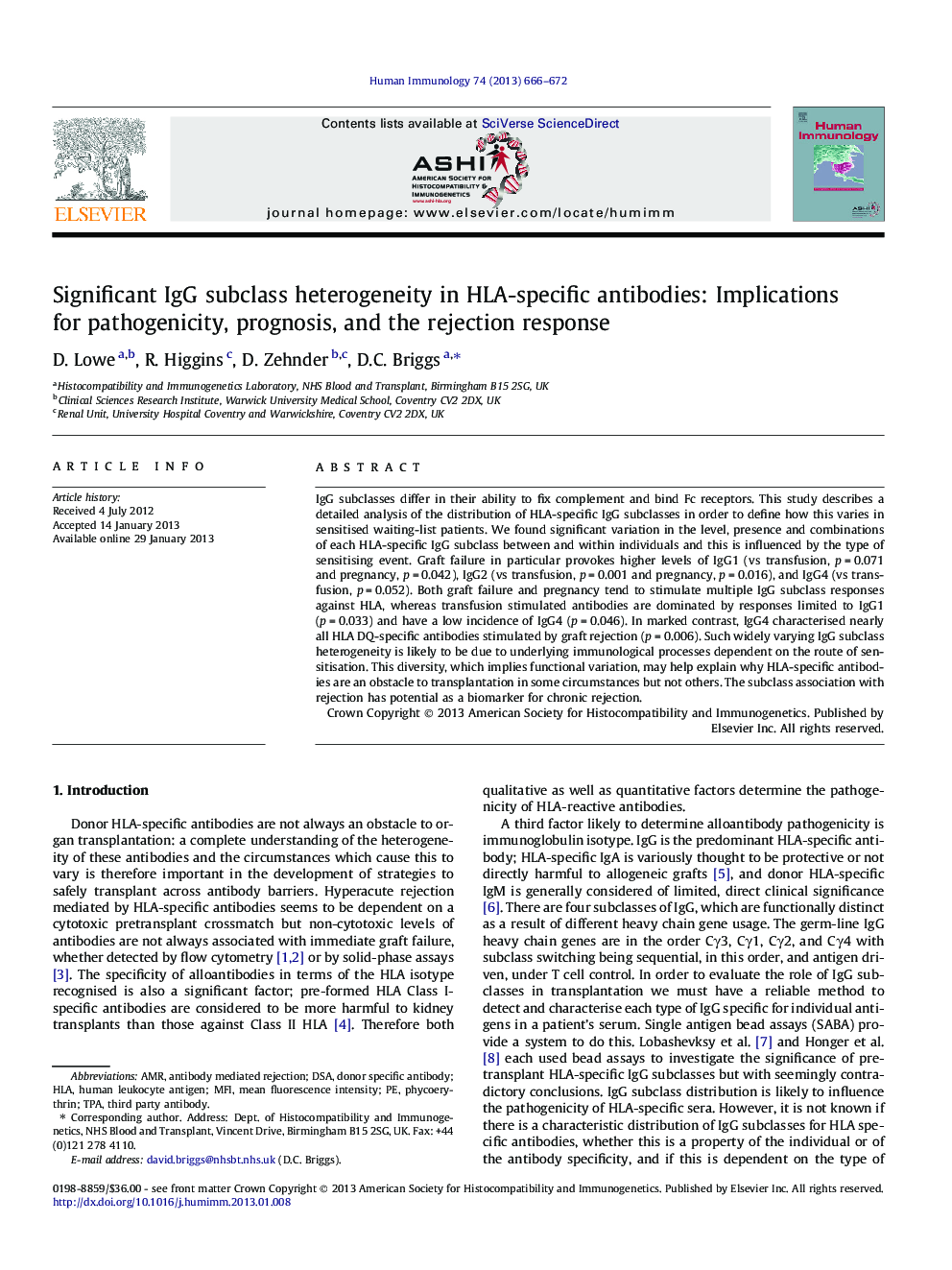| کد مقاله | کد نشریه | سال انتشار | مقاله انگلیسی | نسخه تمام متن |
|---|---|---|---|---|
| 3350296 | 1216381 | 2013 | 7 صفحه PDF | دانلود رایگان |

IgG subclasses differ in their ability to fix complement and bind Fc receptors. This study describes a detailed analysis of the distribution of HLA-specific IgG subclasses in order to define how this varies in sensitised waiting-list patients. We found significant variation in the level, presence and combinations of each HLA-specific IgG subclass between and within individuals and this is influenced by the type of sensitising event. Graft failure in particular provokes higher levels of IgG1 (vs transfusion, p = 0.071 and pregnancy, p = 0.042), IgG2 (vs transfusion, p = 0.001 and pregnancy, p = 0.016), and IgG4 (vs transfusion, p = 0.052). Both graft failure and pregnancy tend to stimulate multiple IgG subclass responses against HLA, whereas transfusion stimulated antibodies are dominated by responses limited to IgG1 (p = 0.033) and have a low incidence of IgG4 (p = 0.046). In marked contrast, IgG4 characterised nearly all HLA DQ-specific antibodies stimulated by graft rejection (p = 0.006). Such widely varying IgG subclass heterogeneity is likely to be due to underlying immunological processes dependent on the route of sensitisation. This diversity, which implies functional variation, may help explain why HLA-specific antibodies are an obstacle to transplantation in some circumstances but not others. The subclass association with rejection has potential as a biomarker for chronic rejection.
Journal: Human Immunology - Volume 74, Issue 5, May 2013, Pages 666–672